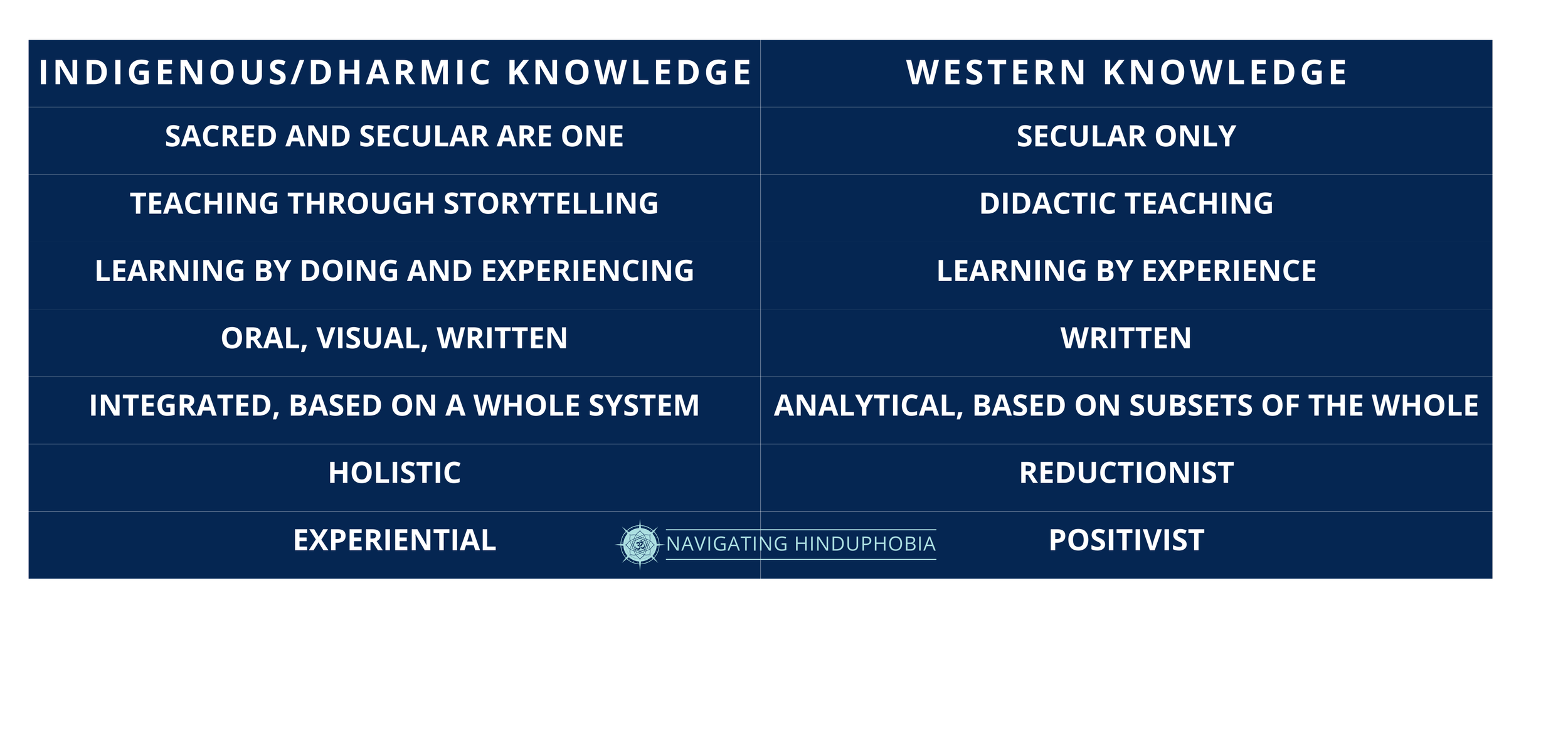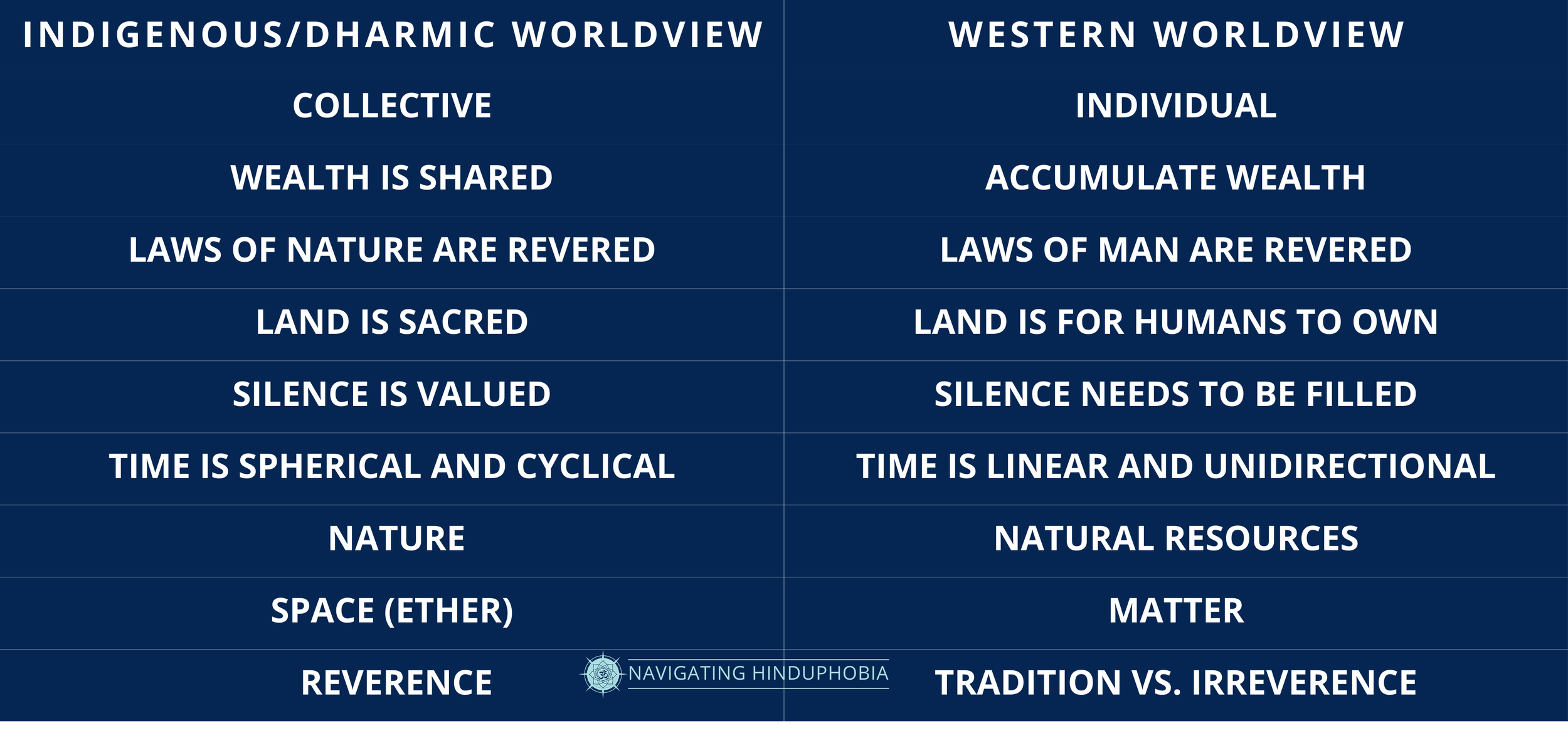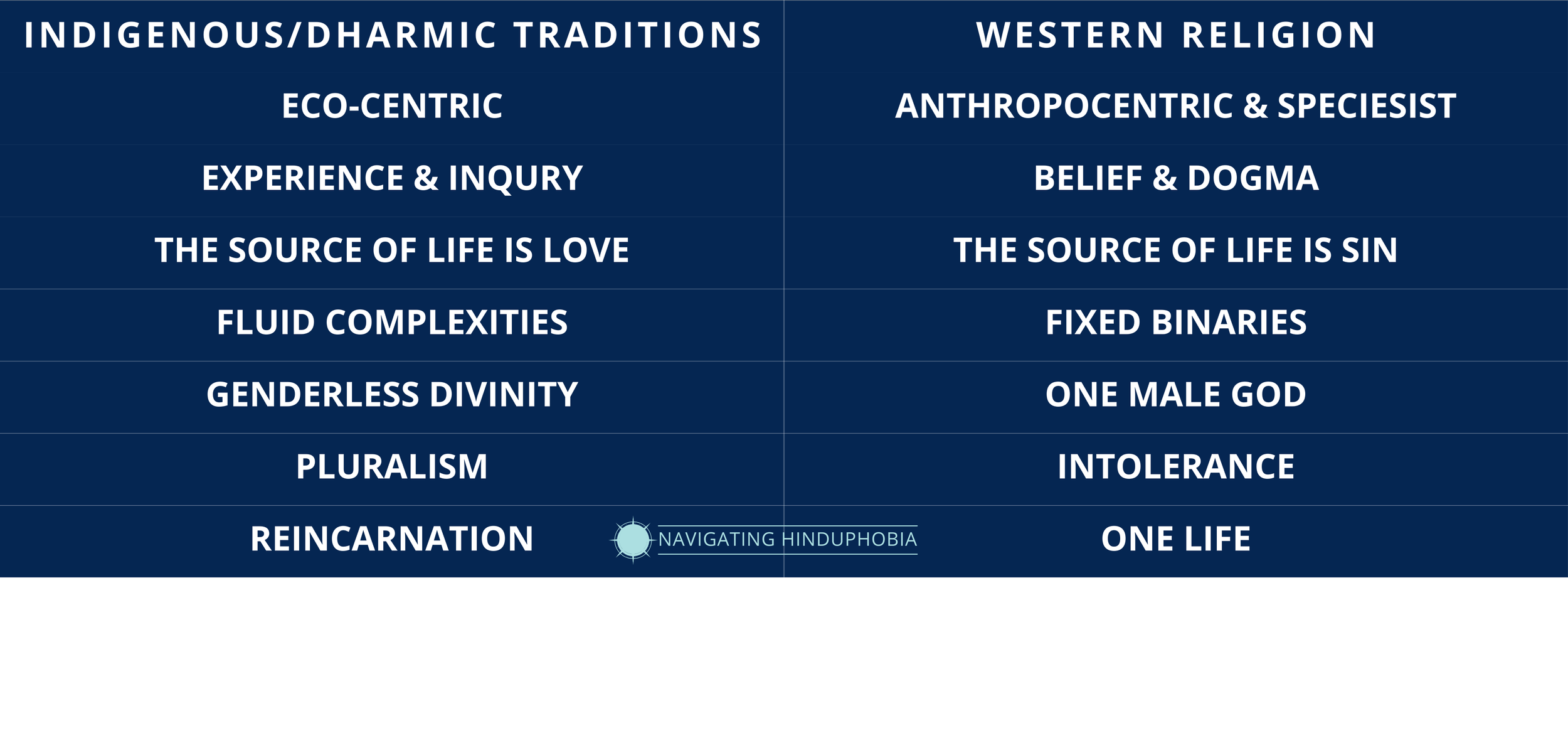Sanatana Dharma & Indigeneity
When Hindus (or Sanatanis) call ourselves indigenous, we tend to ruffle feathers and raise eyebrows. This is due, in part, to the persistence of colonial era theories and Western-centric assumptions about how indigeneity is constructed. These ideas have been repeated so frequently and are so deeply embedded into the collective consciousness that Hinduphobes can simply pick them up and throw them at us to appear knowledgeable and moral, while accusing us of being appropriative, oppressive, and unethical. Let’s unpack this.
Didn’t the Aryans invade India and oppress the original Adivasi people? Doesn’t that make Hindus colonizers?
In short, the answer is no. Aryan Invasion Theory is a colonial era theory that has since been debunked across three different disciplines - archeology, linguistics, and genetics. If you’d like to learn more, there is a list of authors, articles, and books in the Resources section. Furthermore, the term “Adivasi” was coined by the British in order to separate
Aren’t all Indians indigenous to India, not just Hindus?
When Hindus (and other Dharma practitioners) refer to ourselves as indigenous, it’s important to clarify that we are not referring to the genetic population of India. We are referring to an uninterrupted ancestral connection to and stewardship of an indigenous knowledge tradition.
How can Hindus call ourselves indigenous when we are not indigenous to this land (Turtle Island or the Americas)? I’m Hindu but not of Indian descent - can I call myself indigenous?
We are not indigenous to this land. However, we are stewards of an indigenous tradition - Sanatana Dharma.
Below is an articulation of Indigenous versus Non-Indigenous/Western frameworks of knowledge, worldviews, and religion. (This table is an aggregation/adaptation of several tables from scholarship that represents different indigenous traditions from around the planet.) A close reading of the table, paired with our knowledge and experiences, clearly and irrefutably supports the assertion that Sanatana Dharma is an indigenous tradition. As you read through these tables, reflect on the following question -
Which side of these tables does Sanatana Dharma predominantly sit?



